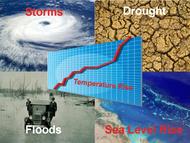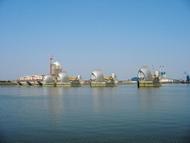The EPA 2009 CO2 Endangerment Finding is still in effect and provides the basis for multiple government climate change initiatives.
The EPA Clean Power Plan has been replaced by the EPA Affordable Clean Energy Rule, though the new ACE Rule is being challenged in court by both states and local governments.
The near-surface temperature data continue to be “adjusted” and “infilled” and “homogenized” in an attempt to compensate for data measurement accuracy, measuring station compromise, paucity of measuring stations and other factors.
The consensed climate science community has acknowledged the shortcomings of the current near-surface temperature measurement network, with the exception of the US Climate Reference Network, and has identified the need to develop a global measurement network similar to the US CRN. However, there is apparently no current effort underway to develop and place this network.
The calculated near-surface temperature anomalies continue to display unresolved differences from the tropospheric anomalies measured by satellites. However, there is apparently no effort underway to resolve these differences.
The CMIP5 climate models continue to project larger anomalies than are observed by both the near-surface and satellite anomaly measurements.
The consensed climate science community has acknowledged that the models are “running hot” and that efforts must be made to resolve this issue. However, this effort would be compromised by the fact that the sensitivity of the climate to a doubling of atmospheric CO2 and the forcings and feedbacks which occur in the atmosphere are not known.
The consensed climate science community continues to use the discredited Representative Concentration Pathway 8.5 to conjure up scary potential future scenarios, which then feed the anxiety/frenzy of climate change extremists who demand immediate, heroic actions to avoid the potential scary futures.
Sea level continues to rise at a relatively constant rate, though there remains a significant difference between the tide gauge measurements and the satellite measurements. However, there does not appear to be any significant effort underway to resolve this discrepancy.
Unverified climate models continue to be used to attempt to attribute some share of the causes of various perceived changes in weather events, such as hurricanes, floods, droughts, tornadoes, wildfires, etc. to climate change. These attribution studies remain highly questionable.
Extremist efforts to vilify and/or punish anthropogenic climate change skeptics continue apace. The subject of “re-education camps” has been raised, among other potential “ultimate solutions to the denier problem”.
The 2019 Atlantic hurricane season featured 20 tropical cyclones, 18 named storms and only 6 hurricanes. Only hurricane Dorian made landfall in the US and then only as a Category 1 hurricane. Dorian however devastated the North islands of the Bahamas as a Category 5 storm.
US drought experience in 2019 was relatively typical, although two areas alleged to be in “permanent drought” in California and Texas are no longer in drought.
The annual number of violent tornadoes (F3-5) in the US continues the general pattern of decline since 1950, notably the year in which anthropogenic CO2 emissions are generally regarded to have begun impacting the global climate.
Regardless, panicked calls for urgent action to avoid “Climategeddon” continue to grow more frequent and louder.
 The Right Insight is looking for writers who are qualified in our content areas. Learn More...
The Right Insight is looking for writers who are qualified in our content areas. Learn More...










